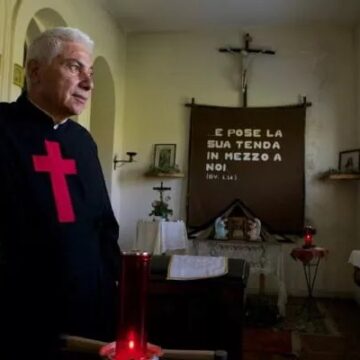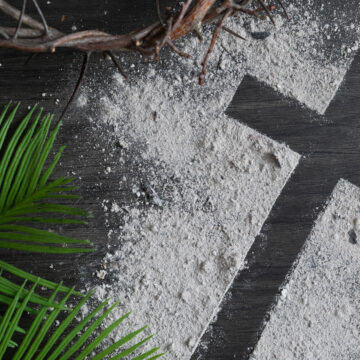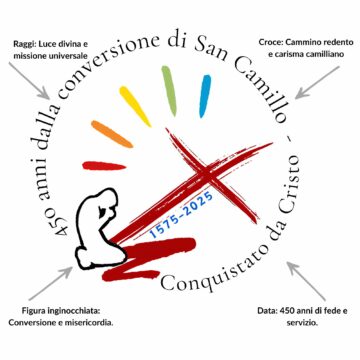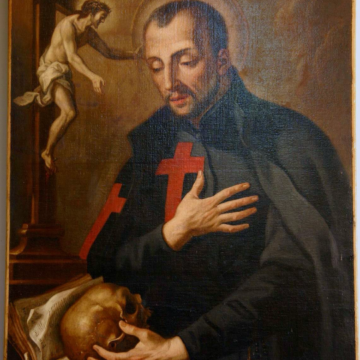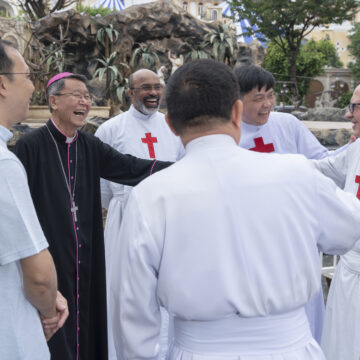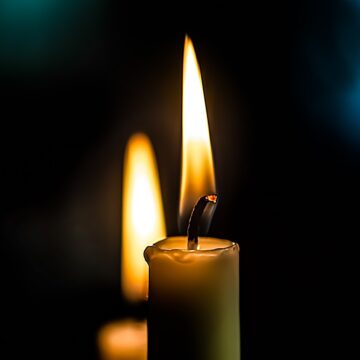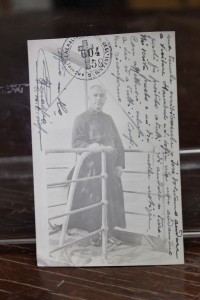 ‘Today we passed the Dardanelles, not without some emotion, because as soon as we entered the Turks fired a canon twice to make us stop. After about three hours of waiting on the part of the pilot we thought that we could continue on our way undisturbed but…other cannon bursts , one of which was a live shell, made us stop!’
‘Today we passed the Dardanelles, not without some emotion, because as soon as we entered the Turks fired a canon twice to make us stop. After about three hours of waiting on the part of the pilot we thought that we could continue on our way undisturbed but…other cannon bursts , one of which was a live shell, made us stop!’
These are the words of Father Francesco Tenaglia who wrote to the Superior General, Vido, from the Sea of Marmora, on 12 November 1912. He had embarked as a military chaplain on the hospital ship ‘Re d’Italia’ which was to sail to Constantinople.
Father Isaia Francucci had embarked on another ship, the ‘Regina d’Italia’, also as a military chaplain.
We are at the height of the war between Italy and Turkey, otherwise known as the Libyan war, which was fought by the kingdom of Italy against the Ottoman Empire in 1911-1912.
The two ships left from the port of Spezia on 4 October 1911 after being completely overhauled to be transformed into hospital ships. They were provided with sterilising laundries, a room for radioscopy, an operating theatre, and a first aid area.
The captain, the medical doctors, the nurses and the chaplains were all, despite the gravity and danger of the situation, aware of their mission to go and save lives.
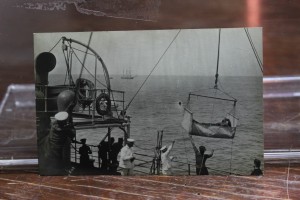 The two ships travelled between Italy, Libya and the Aegean, being near to a number of cities in the war zone: Tripoli, Tobruk, Derna, Homs, Bengasi and Rhodes. They made fifty-five trips and hospitalised and repatriated in the ports of Naples, Palermo and Catania 30,680 casualties (11,112 were on the ‘Re d’Italia’ – 9,985 sick patients and 1,127 wounded; 14,568 were on the ‘Regina d’Italia’).
The two ships travelled between Italy, Libya and the Aegean, being near to a number of cities in the war zone: Tripoli, Tobruk, Derna, Homs, Bengasi and Rhodes. They made fifty-five trips and hospitalised and repatriated in the ports of Naples, Palermo and Catania 30,680 casualties (11,112 were on the ‘Re d’Italia’ – 9,985 sick patients and 1,127 wounded; 14,568 were on the ‘Regina d’Italia’).
This moving account comes from the extensive correspondence of Francucci and Tenaglia in which all their feelings and passion emerge, aware that they had been called to be the instrument of God and their homeland in carrying out their mission, even putting their own lives at risk.
In these letters, moments of calm follow each other, where the two religious give themselves over to describing the seascapes and landscapes that surrounded them, They then, suddenly, provide agitated descriptions of harsh barbarities where the Arabs ‘wounded and killed not only those who were already wounded but also those who were taking care of them’, as we are told in a letter in a letter of 25 October 1911 from Father Francucci : ‘on the twenty-third there was a clash and a riot of the Arabs who, being armed, fired from the houses at the backs of our soldiers, and in particular two companies of Bersaglieri were almost completely eliminated…as regards the other soldiers some were wounded and some died, the number of deaths is not known: here in the ship there are more than two hundred wounded…The roar of the canons, the firing of the rifles, the confused running of the 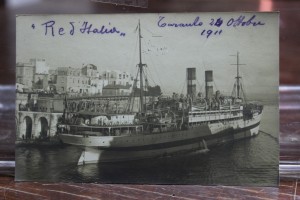 Arab cavalry, which was almost completely destroyed by our artillery; the day progressed, everything combined to produce in the spirit feelings of trepidation about so many poor young men’.
Arab cavalry, which was almost completely destroyed by our artillery; the day progressed, everything combined to produce in the spirit feelings of trepidation about so many poor young men’.
And we are also told about the sad and tragic event of the burial given to two soldiers who died of typhus. Not being able to stay for a long time on the ship which had been unable to continue on its way because of a heavy storm, they were buried in a ‘place secure against any possible profanation where the two coffins were placed, and a heap of earth, stones and a cross of wood marked the place where the two fallen soldiers lie far from their beloved homeland’.
These letters, which are kept in the archives of the Church of St. Mary Magdalene, accompanied by photographs and postcards which document the whole tragic event, in addition to being a valuable glimpse of history narrate to us once again the dedication of Camillian religious in following their mission with joy in a spirit of sacrifice towards their neighbours.
For the service that they had rendered, the two chaplains were decorated for ‘merit acquired in their delicate mission during the war, made by the King ‘motu proprio’ Knights of the Crown of Italy’.
.
Luciana Mellone



